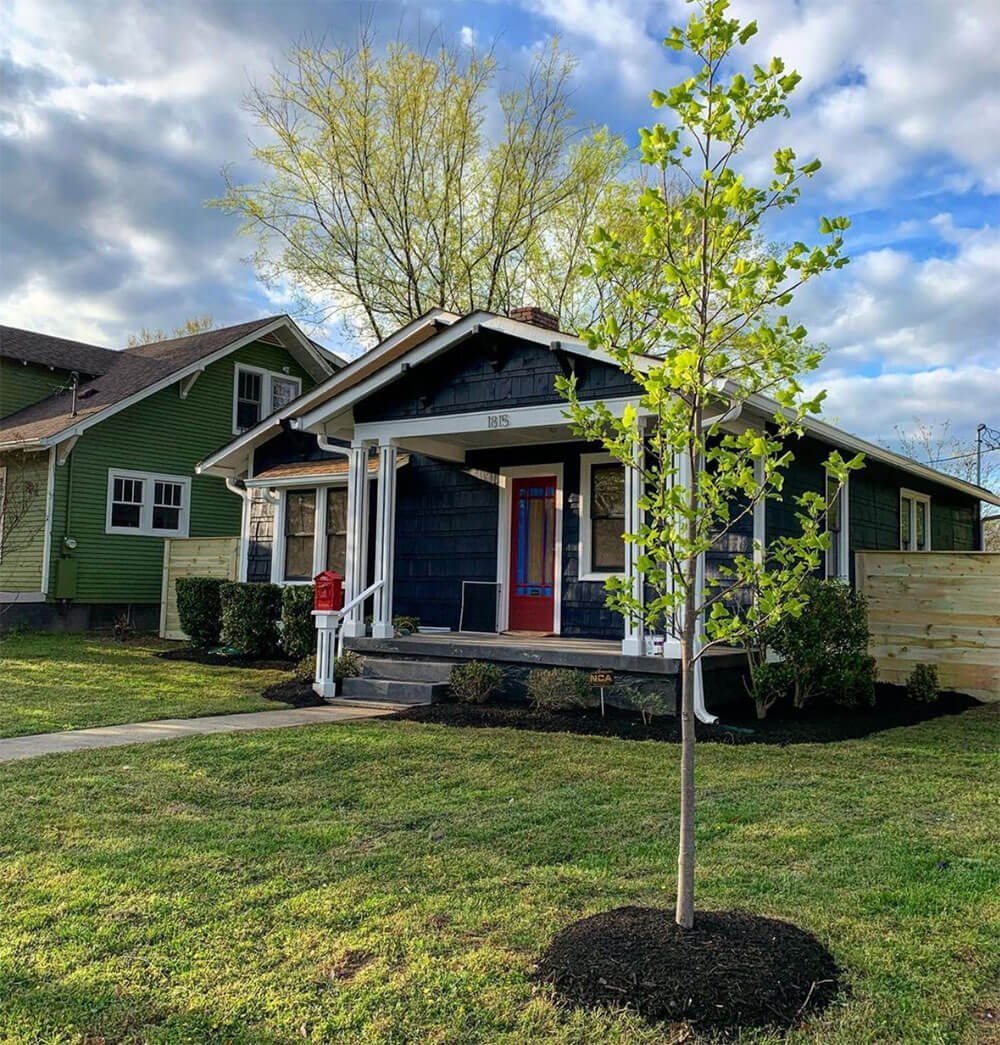Where to Plant a Tree, Part 3: House Foundation Proximity
When Roots Grow Underneath Your House
When a tree is planted too close to a house, roots can stretch into or under the foundation and damage the structure. The bigger the tree, the more potential there is for major damage. Existing trees can be dealt with according to the specifics of the situation, but the best time to prevent a problem is when planting a new tree near a house.
Large trees should be planted far enough away from your home to avoid damage to your foundation.
How Do Roots Disturb House Foundations?
Roots soak up moisture and nutrients from the ground, and they stretch out as wide and deep as they’re able to. Trees have three types of roots: the tap root, which grows directly downward; secondary roots, which are fibrous and reach out at all angles under the tree; and lateral roots, which grow horizontally near or at surface level. It’s the strong, dense lateral roots that can disturb a house if they reach into the foundation.
While roots usually only go a few feet deep, they can spread out as wide as the canopy. This means if your tree is so close that branches hang over the house, it’s probable that the tree’s roots are growing underneath the house. This can become a problem as the lateral roots grow big and thick, and if a storm makes the tree wobble, it might lift and crack the foundation. The two main home foundation problems are tree roots and leaking pipes. In fact, a cracked foundation from tree roots may be a sign there’s a plumbing leak that’s attracting and feeding the root growth.
What Problems Can Tree Roots Cause to a House’s Foundation?
House foundations are made of brick, concrete, and lumber. A crack from a leak or from the force of a root in the foundation can lead to several problems, depending on where the roots are reaching and how severe the disruption is. These include:
Cracks, distortion or buckling in the floor
Vertical cracks in the walls
Uneven door and window frames
Broken windows from cracked or shifting walls
Cracks in roofing
These can become more serious and unsafe over time and lead to other problems. If you notice signs like those above, a certified foundation repair professional can help you get the issue under control. A certified arborist should also be contacted to inspect and help correct an issue relating to a tree.
How Do You Prevent Tree Roots from Damaging a House’s Foundation?
If you’re planting a new tree, find out how large it will be at maturity. The rule of thumb is to plant the tree as far from the house as its height at maturity. This will not only protect your foundation, it will protect your house if the tree falls in a storm. A large tree species like an elm or an oak should be planted at least 50 feet from a home, while a smaller one like a dogwood or a magnolia can be planted just 10 feet away.
If you have a big, old tree close to your home, an arborist may be able to trim the roots and install a root barrier to keep them from growing into the foundation. You should always contact a certified arborist to assess and perform any sort of trimming or pruning, especially of large, mature trees.
What You Can Plant Next to the House?
A building contractor would suggest not planting any plants against the house, even bushes. Shrubs and hedges that are against the side of a house create an area where air can’t ventilate, and moisture can build, causing the humid and dark conditions that mildew thrives in. Trees that are too close to the house that need a lot of water might also damage the foundation if it’s too wet too frequently.
Gardeners, on the other hand, consider certain plants as “foundation plants,” ones that can be safely planted near and along the house. Following the rule of thumb that guides plantings by the spread of their canopy, certain small trees can be planted very close to a house when done strategically. Short, tight trees are much less likely to cause damage if they’re blown around in a storm, and their roots don’t get as big or extensive as bigger tree species. Some good choices include:
Eastern Red Cedar “Idyllwild” and “Taylor,” as well as Columnar Sweetgum, which grow in tall, thin columns
Crepe myrtle, a bushy canopy tree that grows a small trunk and can be kept as a shrub, sprouting pink flowers in spring
Allegheny serviceberry – another bushy, very small tree that has many thin shoots, giving the tree a wide, bushy appearance
Southern Magnolia Little Gem, stout trees that grow white flowers and dense foliage, which can be cropped to stay short and round for privacy or ornament
For more tips on choosing the right trees for your yard, stay connected with us at the Nashville Tree Conservation Corps by subscribing to our newsletter!

